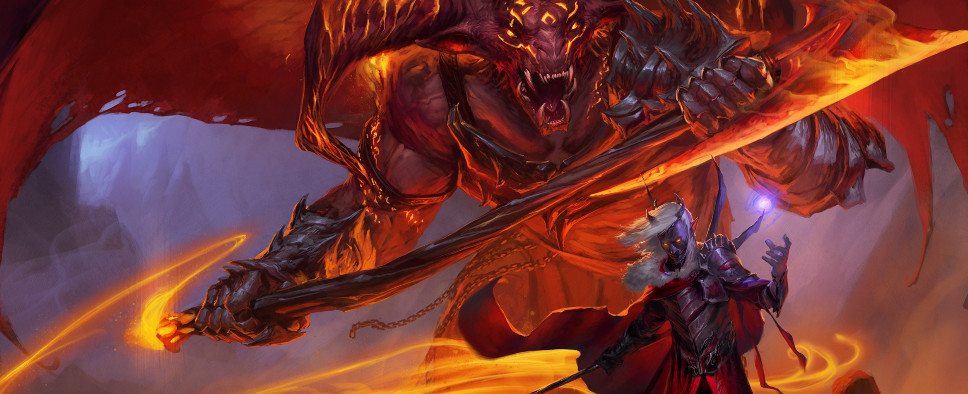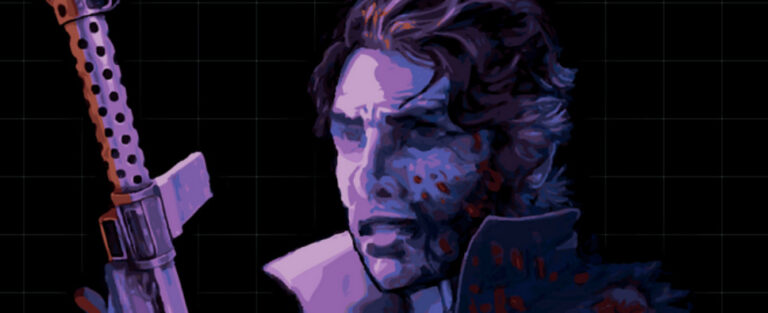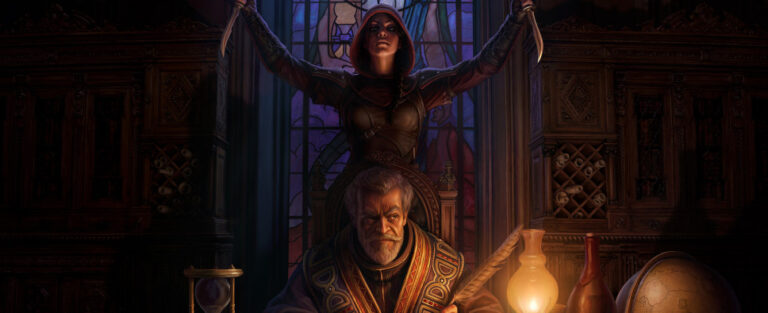Dungeons & Dragons fans will find that a fistful of new hands-on previews for n-Space’s Sword Coast Legends have landed on the web, courtesy of the game’s appearance at last week’s E3 event.
PC Gamer:
Then came the dungeon. First, the dev DM ticked a few boxes in an intimidatingly deep menu, selecting broad options like environment type, approximate size, and even weather conditions. Based on these inputs, the game generated a randomized map, and that’s where the real fun began: he carefully placed a custom roster of enemies complete with custom abilities and custom appearances in custom locations around the dungeon, whose chambers he then customized with props and traps triggered by scripts. It’s ridiculous and spectacular. You can customize everything down to the last damn cobweb.
Of course, you’re not obligated to. In our case, the developers blazed through the creation process in about five minutes and then immediately turned us loose in the spider-infested hellscape we’d just watched them create which, if we were playing the game for real, would have become available only after we’d spoken with Gwen. Not only did our mini-adventure give me a chance to delve into a dungeon with a full in-person party, it also gave the developers a chance to show off the final facet of the DM role: direct character control.
NZGamer:
The specific quest that we were on was actually made by another player in the room the Dungeon Master (DM). The developers went into a lot of detail about the game’s Campaign Creation Tools, and how they wanted to recreate the real-world, tabletop feeling of crafting your own adventures and encounters for a group of friends to enjoy. What that meant for the dev team was implementing a breadth of robust tools, to suit specific needs.
DM’s have the ability to create custom maps, choosing from a range of tilesets, prefab structures, objects, weather patterns, and times of day. Traps can be peppered throughout, and other environmental triggers can be laid down (say, to have enemies ambush the players at a particular location, have a boss spawn, or have someone initiate dialogue). Additionally, DMs can create secret rooms, filled with caches of loot.
Destructoid:
Next, we got to see an abandoned mountain cabin. Schwalk realized it wasn’t as atmospheric as he wanted, so he dragged a time slider as we watched the shadows cascade in quick whorl, chasing a disappearing sun. A few more keys were pressed and a lightning storm began raging. Zooming into the cabin, he quickly placed loot and furniture around the room, finishing up by leaving a corpse with an impossible amount of bloodstains around him. It was by this point that I was becoming seriously impressed by how easy DMing looked. Sure, Schwalk was familiar with the system by now, but despite the large number of drop-down menus, sliders, and toggles, the process was easy to follow.
After he had established the ease of creation, he dropped us into a dungeon and we began our short adventure. We were to fight cultists, demons, and ultimately a Spider Queen (no, it wasn’t Lolth!). Schwalk placed all sorts of weird stuff throughout the catacombs, like circus tents filled with spider eggs, unarmed villagers who would sprint up to our merry band of adventurers to punch us, and a bunch of traps. The combat is based on fifth edition, so abilities are easy to understand and numbers are relatively small. This goes a long way in making Sword Coast Legends seem less intimidating for new players.
The Escapist:
We watched as the DM set torches, trap trip locations, secret rooms, the mini-boss cleric and the end boss spider god. Then the fun began.
Four players jumped online – I played a necromancer – and we entered the dungeon to take on the DM, who could monitor his creation or play any of the characters he created. The DM couldn’t modify things on the fly, so when the dungeon inhabitants killed us rather quickly, he went back and made a few changes and we tried again, this time being a bit more competitive against his minions. My necromancer had a scroll that was almost one shot, one kill, so the cleric and the spider boss were no match for our party.
PCWorld:
You can create custom named locations, custom quests, write custom dialogue, custom vendors, custom characters (replete with custom stats and items), custom enemies basically anything and everything can be tailored. Is it infinite customization? Of course not. I don’t think you can import your own character models or anything really crazy.
But this is a spectacular amount of control ceded to the DM. You can even, as I mentioned, decorate dungeons with props. During our demo, we watched an empty dungeon room turn into a grim ritual chamber, with rows of torches and an altar. Give two players the same dungeon layout and they’ll undoubtedly put the space to very different uses.
Massively Overpowered:
Ability-wise, I found my character didn’t feel as iconic as I expected it to during my demo. I had one rogue move everyone at the demo told me to use; it teleported me behind my target to position me for a sweet backstab, but nowadays that’s a pretty standard rogue move, especially in a top-down, isometric game. I can at least spin my camera to look at my surroundings, but it didn’t blow me away. My racial, however, was much more interesting. Dwarves have a (secret flagon) that heals the player character a bit and gets you quite drunk, causing you to miss more. I can appreciate that nod to realism and roleplay, since racials are becoming something MMOs eliminate in the quest for ultimate balance.
It’s the dungeonmaster system that is the biggest game-changer. During my demo, I had something called an (adversarial DM.) Though the team expects the DM to guide players through a challenging but fun experience, DMs do have the ability to kill off the party or at least make living very difficult. I didn’t get any hands-on with the DM system myself, but our DM spawned a ton of mobs and landed some few high-level spells on our tank, nearly wiping us out. It made me realize that getting a random DM who sees himself as the boss mob you need to fight can make your gameplay extremely unpleasant, especially if you’re more of a traditional D&D player who’s used to cooperation. It’s something I think the team really needs to look out for since the current plan is to use a matchmaking system. That means PUGs, and let’s be honest: Random people on the internet are more willing to act in negative ways since they feel anonymous.
The Koalition:
We were dropped into the dungeon and the gameplay was immediately familiar. I clicked spaces in front of me to move, rotated my camera with the right mouse button, and used WASD to shift the camera around the environment. Abilities were mapped to my numbered keys and the action was fast and intense. Everything reminded me of a slightly more fast paced version of Baldur’s Gate, or more recently, Pillars of Eternity. The biggest difference is that in multiplayer, there is no pausing for combat that’s only reserved for the single player campaign, for obvious reasons.
During the experience, I could see the Dungeon Master’s wisp icon fluttering around each room, which meant he was actively looking and potentially tinkering with the room we were inside. In real time, while we are playing, the DM could adjust encounters, add or remove enemies and traps, and perform a variety of other tasks as well. It allows for the type of on-the-fly tweaking and customization that you’d typically only expect to see from a proper tabletop game of D&D.
And iDigitalTimes:
The demo started with a developer showing off all of the customization tools found in Sword Coast Legends. Not only can players create quests for their friends to tackle, they can also customize just about everything else. Players may need to go to a town and talk to a specific person to start a mission. In the town, merchants, smiths, and other NPCs can be set up for players to interact with. These NPC characters can all be given dialogue to say, items to hold, and a personality to emote. Their appearance can also be customized, from their race to their hairstyle, to the colors of their clothing.
The mission we were given was to go explore the whereabouts of a certain villager’s brother. The brother in question was set up to be found dead with an item on him to kick off a new quest. This new mission sent us deep into a catacombs.







